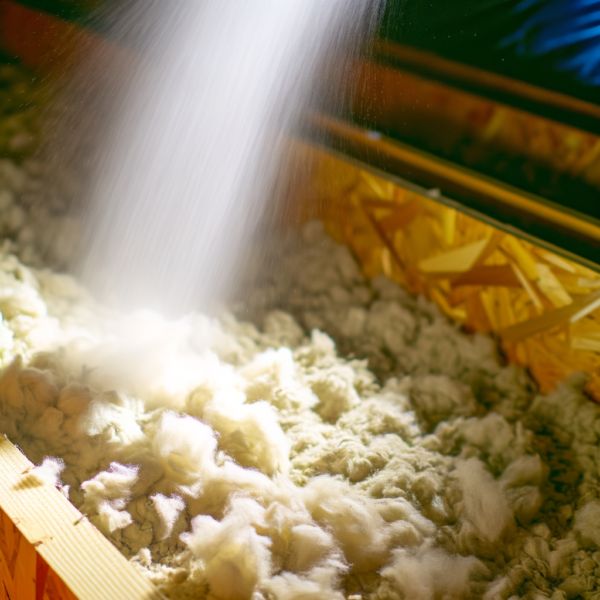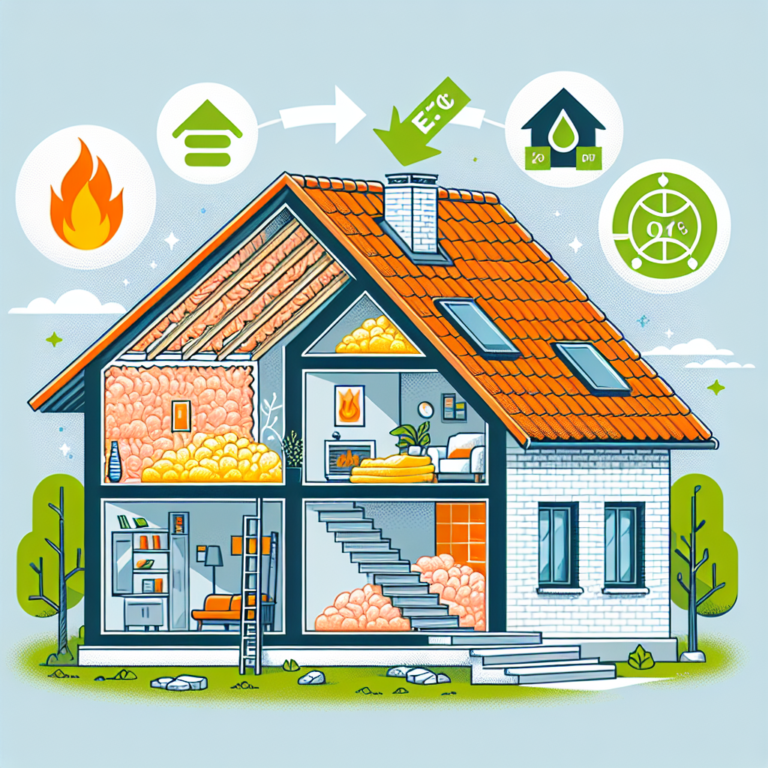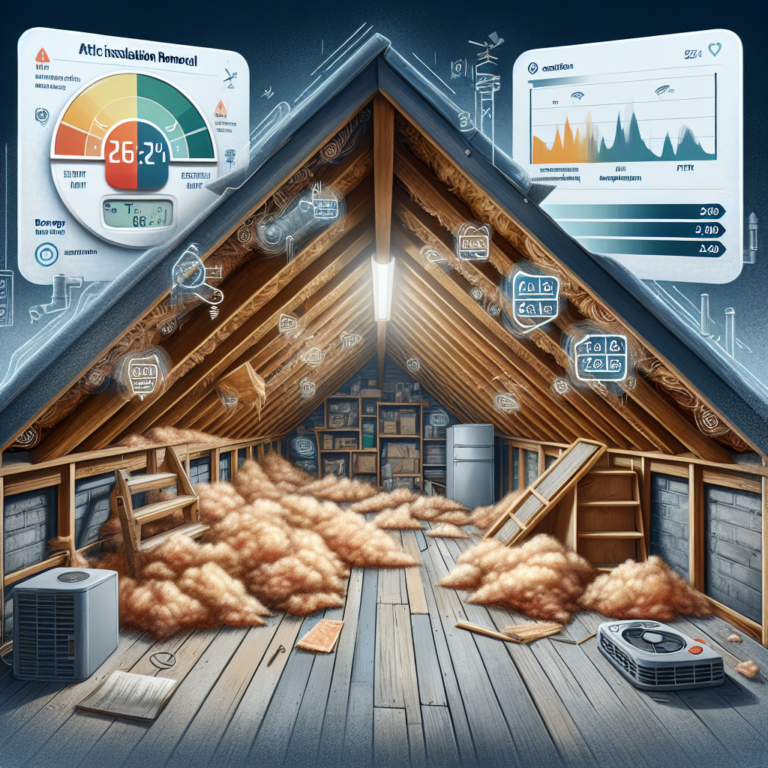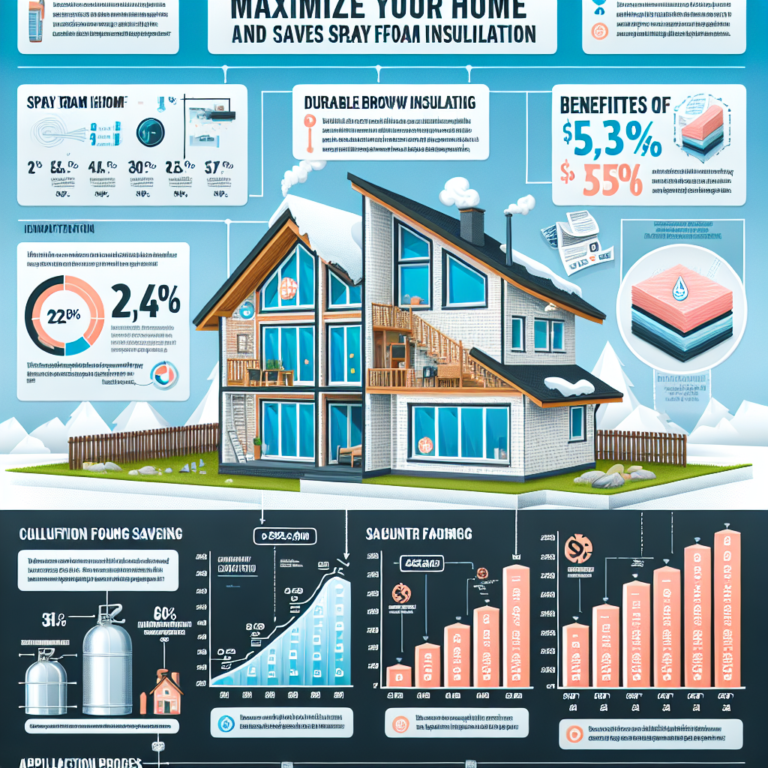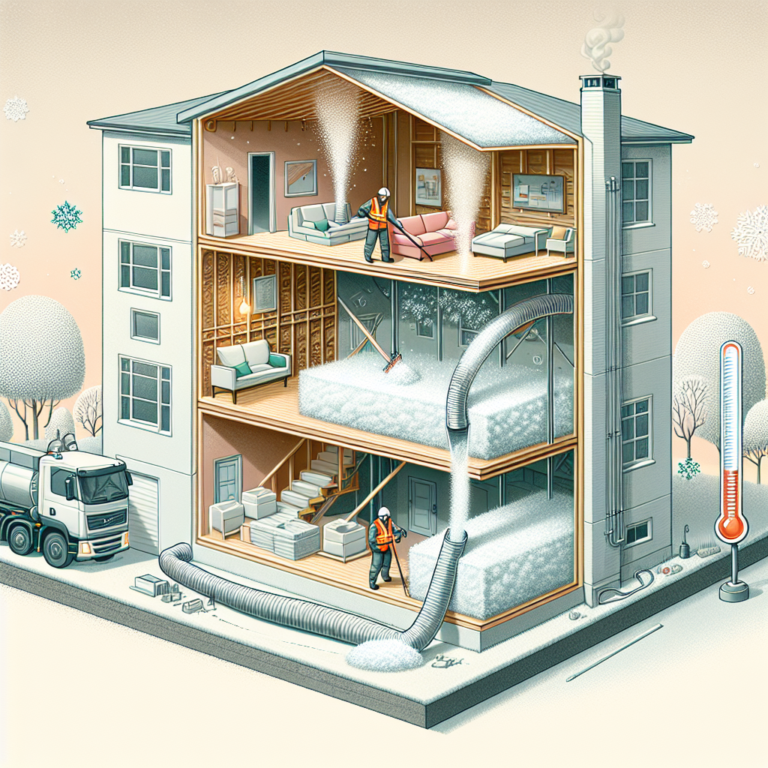Transform Your Attic with Blown-In Fiberglass Insulation: The Ultimate Home Upgrade!
Table of Contents
1. Introduction
2. Why Choose Blown-In Fiberglass Insulation?
2.1 Superior Coverage and R-Value
2.2 Moisture and Fire Resistance
2.3 Quick, Cost-Effective Installation
2.4 Eco-Friendly Benefits
3. The Process of Installing Blown-In Fiberglass Insulation
3.1 Preparing Your Attic
3.2 Sealing Air Leaks
3.3 Blowing in the Insulation
3.4 Final Inspection and Maintenance
4. Factors to Consider When Choosing Blown-In Fiberglass Insulation
4.1 Material Quality and R-Value
4.2 Professional vs. DIY Installation
4.3 Warranty and Long-Term Performance
4.4 Budget and Return on Investment
5. Q&A
6. Conclusion
Introduction
A chilly winter draft or sweltering summer heat can make your attic the weakest link in your home’s energy envelope. Transform your attic with blown-in fiberglass insulation, a proven upgrade that boosts comfort, cuts energy bills, and even reduces noise. In this guide, you’ll discover why blown-in fiberglass insulation is the ultimate attic solution, how it’s installed, what to consider before you invest, and answers to common questions.
Why Choose Blown-In Fiberglass Insulation?
H2: Superior Coverage and R-Value
Blown-in fiberglass insulation consists of tiny glass fibers that can fill every nook and cranny of your attic. Unlike rigid batts, it conforms to irregular spaces around pipes, vents, and rafters. At roughly R-2.2 to R-2.7 per inch, it delivers higher thermal resistance than many alternatives, helping you maintain a consistent indoor temperature year-round.
H2: Moisture and Fire Resistance
Attics are prone to humidity swings, which can lead to mold or mildew when moisture-sensitive materials are used. Blown-in fiberglass is inorganic— it won’t absorb moisture or harbor mold. Additionally, its glass composition resists ignition, adding a layer of fire protection to your attic.
H2: Quick, Cost-Effective Installation
A professional crew can insulate an average attic in just a few hours. The blowing machine manipulates loose fibers into place, eliminating cutting or fitting. This rapid installation translates to lower labor costs and less disruption to your household. For handy homeowners, renting the equipment and tackling the job yourself is also an option.
H2: Eco-Friendly Benefits
Many blown-in fiberglass products contain a high percentage of recycled glass, diverting waste from landfills. By improving energy efficiency, you’ll also shrink your carbon footprint as your HVAC system consumes less fuel season after season.
The Process of Installing Blown-In Fiberglass Insulation
H2: Preparing Your Attic
Before any insulation goes in, clear out debris, old insulation, and stored items. Repair leaks, reinforce damaged joists, and ensure proper ventilation. A clean, well-ventilated attic sets the stage for optimal performance.
H2: Sealing Air Leaks
Even the best insulation can’t compensate for unchecked air infiltration. Use caulk or expanding foam to seal gaps around plumbing vents, electrical wiring, and attic hatches. Tight sealing ensures blown-in fiberglass insulation stays—and performs—exactly where you need it.
H2: Blowing in the Insulation
A trained technician or DIYer uses a blowing machine to feed loose fiberglass fibers through a hose into the attic. Starting at the farthest corner, they work back toward the entry point, maintaining consistent depth (typically 12–18 inches). Protective gear—masks, goggles, gloves—is essential to prevent irritation from airborne fibers.
H2: Final Inspection and Maintenance
Once the insulation is in place, a quick inspection ensures even coverage and proper depth. Trim any overhang around attic hatches or light fixtures. Every few years, check for settling or gaps and add more blown-in fiberglass insulation as needed to maintain the recommended R-value for your climate zone.
Factors to Consider When Choosing Blown-In Fiberglass Insulation
H2: Material Quality and R-Value
Not all fiberglass insulation is created equal. Compare brands based on recycled content, binder chemicals (look for low-VOC certifications), and manufacturer-backed R-values. A higher initial cost may pay dividends through superior performance and longevity.
H2: Professional vs. DIY Installation
Hiring a certified installer guarantees precise coverage, airtight sealing, and adherence to local codes. However, experienced DIYers can rent equipment and save on labor. Factor in your comfort level, available time, and willingness to don protective gear.
H2: Warranty and Long-Term Performance
Review the manufacturer’s warranty for both material and workmanship. A strong warranty can protect your investment if settling reduces effectiveness or if installation errors occur.
H2: Budget and Return on Investment
Calculate how much you’ll save on heating and cooling each year. Most homeowners recoup the cost of blown-in fiberglass insulation within 2–5 years, depending on energy prices, home size, and existing insulation levels.
Q&A
Q1. How long does blown-in fiberglass insulation last?
A1. Properly installed, it can last the life of your home—30 years or more—without significant degradation.
Q2. Can I install blown-in fiberglass insulation over existing insulation?
A2. Yes, as long as the existing layer is in good condition and you maintain the recommended total R-value.
Q3. Will blown-in fiberglass insulation reduce noise?
A3. Absolutely. Its dense, irregular structure dampens sound transmission, making your home quieter.
Conclusion
Transform your attic with blown-in fiberglass insulation and enjoy a more comfortable, energy-efficient home. By filling every gap with high-R-value material, resisting moisture and fire, and delivering quick installation, blown-in fiberglass insulation stands out as the ultimate attic upgrade. Whether you choose professional installation or a DIY approach, this investment promises lower utility bills, improved indoor comfort, and a greener footprint. Embrace blown-in fiberglass insulation today and experience the benefits for decades to come.




